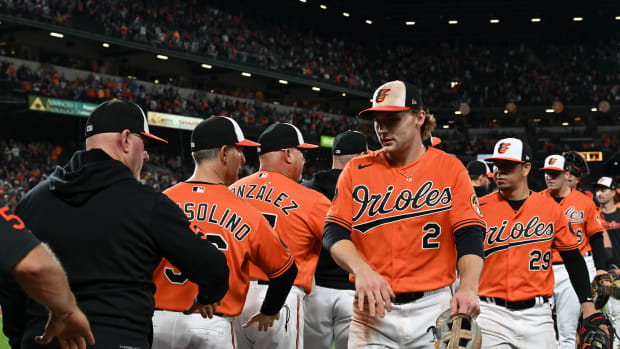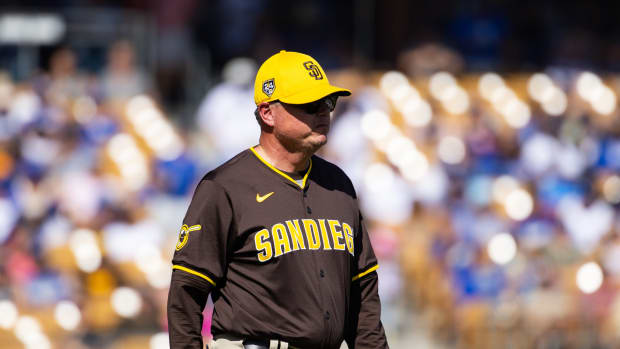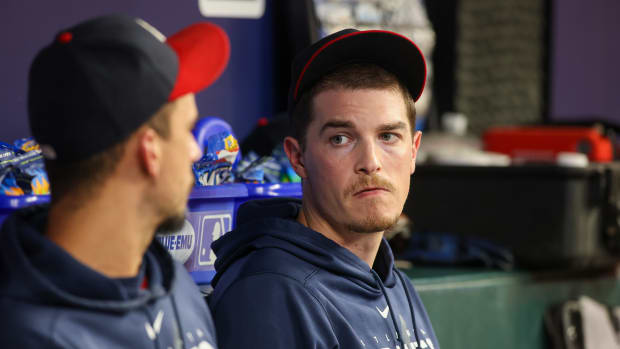A Closer Look At The Expensive But Important Plan To Boost Diversity In MLB's Front Offices
No event brings more baseball people together in one room than the annual Rule 5 draft, held in a large ballroom at the conclusion of the winter meetings every December. Hundreds of key front office and baseball operations people fill the room. Overwhelmingly, the room skews male, white and, increasingly, young.
After extensive research and discussions with commissioner Rob Manfred, a five-person diversity and leadership team put together by the Carey Business School of Johns Hopkins University has a plan to change the complexion of the room.
“There’s no sinister plot we’ve been able to uncover to limit minorities,” said Jose Tamez, managing general partner at Austin-Michael, an executive search firm, and a member of the Hopkins council. “Where there is a bias is in the skill-set bias. That is quite clear. When you start hiring under a skill-set bias, the extension of that looks like a social bias.
“As we dug into it, we started to find out anecdotally and indirectly . . . inevitably it always came back to the same place: analytics.”
Guys And Dolls: Pitchers Of Streaking Indians Making Baseballs Into Artwork
Analytics, once the unfamiliar outsider, have so changed the game that they are now mainstream—the one accepted way of playing ball. Analytics have changed how the game is played (for example, emphasizing power and relief pitching, de-emphasizing bunts, stolen bases, pitchouts and hitting for average), how players are paid (advanced metrics, such as WAR, aging curves and defensive metrics), how players are scouted (the scouts might not have played pro ball), and thus who are the key decision-makers.
Analytics is the new language of baseball. To rise to key decision-making roles you must be not just fluent in analytics but also expert in them. Seventeen of the 23 general managers hired this decade (since 2010) attended an Ivy League school or another elite private institution. This trend is where Tamez and his team found the skill-set bias, or as he said, “Another way of saying [it] is an old and true axiom—people like to hire people who are like themselves … Take all the [GMs] who went to Cornell and Dartmouth, and if you’re harvesting people from those same schools you’re not going to get quite the diversity if you pick from schools like Howard.”
To bridge what it calls “the analytics skills gap,” the Hopkins team is developing a curriculum to offer an executive certificate in baseball analytics. It plans to offer the two-week program beginning in January 2018 to employees in professional baseball, including “managers, coaches, coordinators, player development personnel and scouts,” as well as all front office personnel “seeking additional skills related to on-field strategy, talent evaluation and compensation and emerging analytics topics.”
Weirdest. Season. Ever: The Dodgers' Potentially Fatal Flaw—And The Teams That Could Exploit It
The two-week course is expected to cost $9,600, a fee that may be daunting to most lower level baseball organization employees seeking the analytics skills to advance. The school hopes the costs eventually could be subsidized by franchises that submit attendees, as well as by corporate underwriting, especially from Major League Baseball sponsors.
The Hopkins team has met with Manfred as well as several individual teams, including the Nationals, the Orioles and the Padres, and found support for the idea.
“You want to develop a pipeline for talent,” Tamez said. Baseball in recent years has banked on interns as its main source of developing talent. Two years ago MLB hired Tyrone Brooks, former Pirates director of baseball personnel, as senior director of its Front Office and Field Staff Diversity Pipeline Program, which works with the clubs on entry level and internship opportunities. Tamez wants MLB also to think about developing the analytics skills of employees already in house to widen that pipeline.
“The internship program is akin to each MLB team dedicating all their resources toward their ’17 draft class,” he said, “and overlooking Double A/Triple A players in their own system.”
Think of the baseball analytics certificate as continuing, even necessary, education, not dissimilar to an MBA in the corporate world.
“These clubs could subsidize employees for taking this course, just like in the business world,” Tamez said. “If [MLB] truly wants to see progress, they need a system that delivers results consistently—one that is predictable and sustainable.”


































